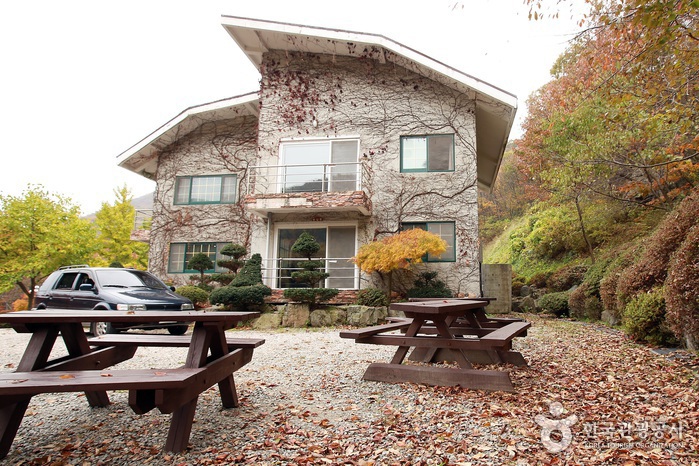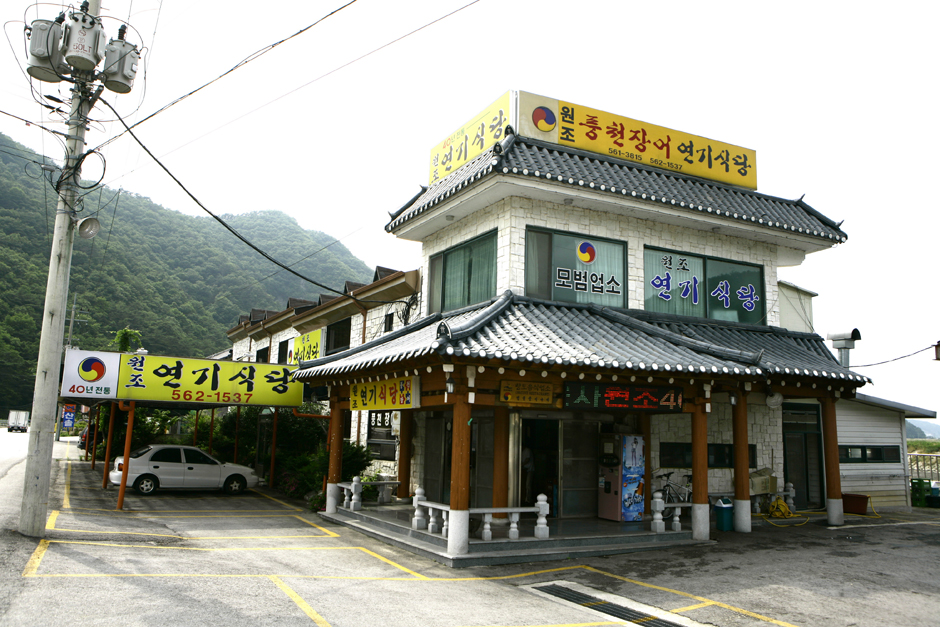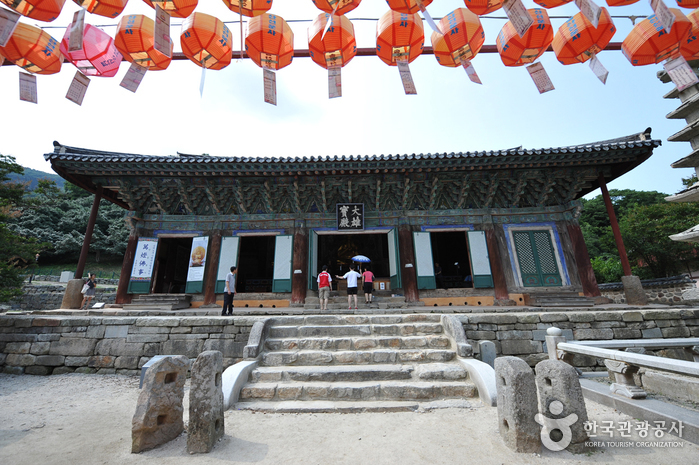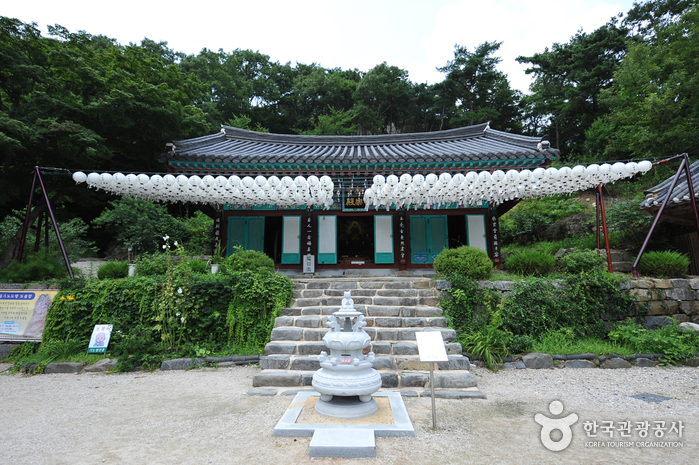Seok Jeong Hill C.C. (호텔석정힐)
8.0Km 2024-12-24
192 , Seokjeong 2-ro, Gochang-gun, Jeonbuk-do
+82-63-563-7711
Seokjeong Resort is a 5 minutes drive from the Seokjeong Hill Country Club golf course in Gochang, Jeonbuk-do. It is mainly frequented by golf course users, but general travelers are also welcome. The hotel provides clean, comfortable rooms and has a seminar room for group events and business meetings.
Bangjangsan National Recreational Forest (국립 방장산자연휴양림)
8.3Km 2025-01-08
353, Bangjang-ro, Jangseong-gun, Jeollanam-do
+82-61-394-5523
Situated between Jeollanam-do and Jeollabuk-do, Bangjangsan National Recreational Forest is the highest rising peak along the ridge starting from the west of Naejangsan Mountain. The recreational park is located on the mid-slope of Bangjangsan Mountain. Many species of wild flowers and broad-leaved trees are distributed all over Bangjangsan Recreational Forest where an exciting paragliding contest takes place annually. This is a great place to unpack and take a break for one or two days as it has accommodation facilities, promenades and trekking courses as well as a small area for splashing in the water. It takes approximately three hours to the mountain's summit from the recreational forest. In addition, there is a trekking path that leads to the Seokjeong Hot Springs on the way down the mountain.
Cheongwon Garden (청원가든)
8.5Km 2025-04-22
67 Seonunsa-ro, Asan-myeon, Gochang-gun, Jeonbuk-do
This restaurant is one of the most positively reviewed restaurants serving freshwater eels near Seonunsa Temple’s entrance for its clean ambience and delicious side dishes. If you order jangeogui here, the eel is salted or basted with sauce in the kitchen and brought to you for grilling.
Yeongi Sikdang (연기식당)
8.8Km 2025-04-22
전북특별자치도 고창군 아산면 선운대로 2727
This restaurant is the first to offer grilled freshwater eel in Gochang. The eel is grilled in the kitchen, so you don’t have to worry about the often smoky business of charcoal-grilled on the table.
National Center for Forest Activities, Jangseong (국립장성숲체원)
8.8Km 2025-10-23
353 Bangjang-ro, Bugi-myeon, Jangseong-gun, Jeollanam-do
The National Center for Forest Activities, Jangseong provides high-quality forest education and forest therapy services by leveraging its location surrounded by Bangjangsan Mountain, boasting superb natural/geological conditions. Chungnyeongsan Mountain is also here and is home to the National Jangseong Healing Forest, the largest subtropical forest plantation in the country.
Seonunsan Mountain [National Geopark] (선운산 (전북 서해안 국가지질공원))
8.9Km 2024-04-07
158-6, Seonunsa-ro, Gochang-gun, Jeonbuk-do
+82-63-560-2699
Seonunsan Mountain is famous for its sunrise views at Nakjodae Overlook and Cheonmabong Peak. The mountain is mostly comprised of hard volcanic rocks, creating a landscape of sharp cliffs softened by the forest vegetation.
Dosolgyegok Valley (Seonunsan Mountain) (도솔계곡 (선운산))
9.0Km 2025-03-15
250, Seonunsa-ro, Gochang-gun, Jeonbuk-do
+82-63-560-8681
Dosolgyegok Valley is located in Seonunsan Mountain in the Gochang-gun district. Seonunsan Mountain, which is also called Dosolsan Mountain, is known for its thick forests and intriguing rock formations. Along the valley, there are many interesting sites such as Jinheungdonggul Cave, Yongmundonggul Cave, Nakjodae Overlook, and Cheonma peak. Dosolgyegok Valley is also famous for being very deep, where the mountain and water fight each other and whirl around in a yin & yang shape. The green forests in summer cover the valley beautifully, and the red leaves and white snow decorate the area in fall and winter.
Gochang Seonunsa Temple (선운사 (고창))
9.0Km 2024-04-07
250, Seonunsa-ro, Gochang-gun, Jeonbuk-do
+82-63-561-1422
Seonunsa Temple is known to have been built in 577, the 24th year of King Wideok of the Baekje dynasty. It is the second head temple of Jogye Order in Jeollabuk-do. According to the temple's historical records, it was originally a very large temple with 89 hermitages and 3,000 monks. Today, only four hermitages remain: Dosoram, Chamdangam, Dongunam, and Seoksangam. In addition, the temple is home to 25 prestigious heritages, namely the Forest of Common Camellias, which is designated as ㅁ Natural Monument. A festival dedicated to this forest is held every April.
Gochang Dosoram Hermitage (도솔암(고창))
9.0Km 2024-04-07
294, Dosol-gil, Gochang-gun, Jeonbuk-do
+82-63-564-2861
Dosoram Hermitage, along with Seonunsa Temple, is thought to have been built during the Baekje era (18 BC-AD 660). The temple is managed by Seonunsa Temple on Dosolsan Mountain in Gochang-gun, Jeollabuk-do.
Gohyang Sikdang (고향식당)
9.1Km 2024-04-18
20-3 Jungchon-gil, Asan-myeon, Gochang-gun, Jeonbuk-do
Gohyang Sikdang is a highly recommended restaurant in Gochang known for its grilled eel dishes. Their signature dish is the Pungcheon jangeo yangnyeom gui (Pungcheon grilled marinated eel) seasoned with a sauce made from over 30 kinds of fruits and medicinal herbs, grilled to perfection. Pungcheon eel from Seonunsan is famous for its rich and savory flavor. They also offer other menu items such as jangeo tang (spicy eel stew) and dolsot sanchae bibimbap (hot stone pot wild vegetable bibimbap).



![Seonunsan Mountain [National Geopark] (선운산 (전북 서해안 국가지질공원))](http://tong.visitkorea.or.kr/cms/resource/64/2678864_image2_1.jpg)


 English
English
 한국어
한국어 日本語
日本語 中文(简体)
中文(简体) Deutsch
Deutsch Français
Français Español
Español Русский
Русский